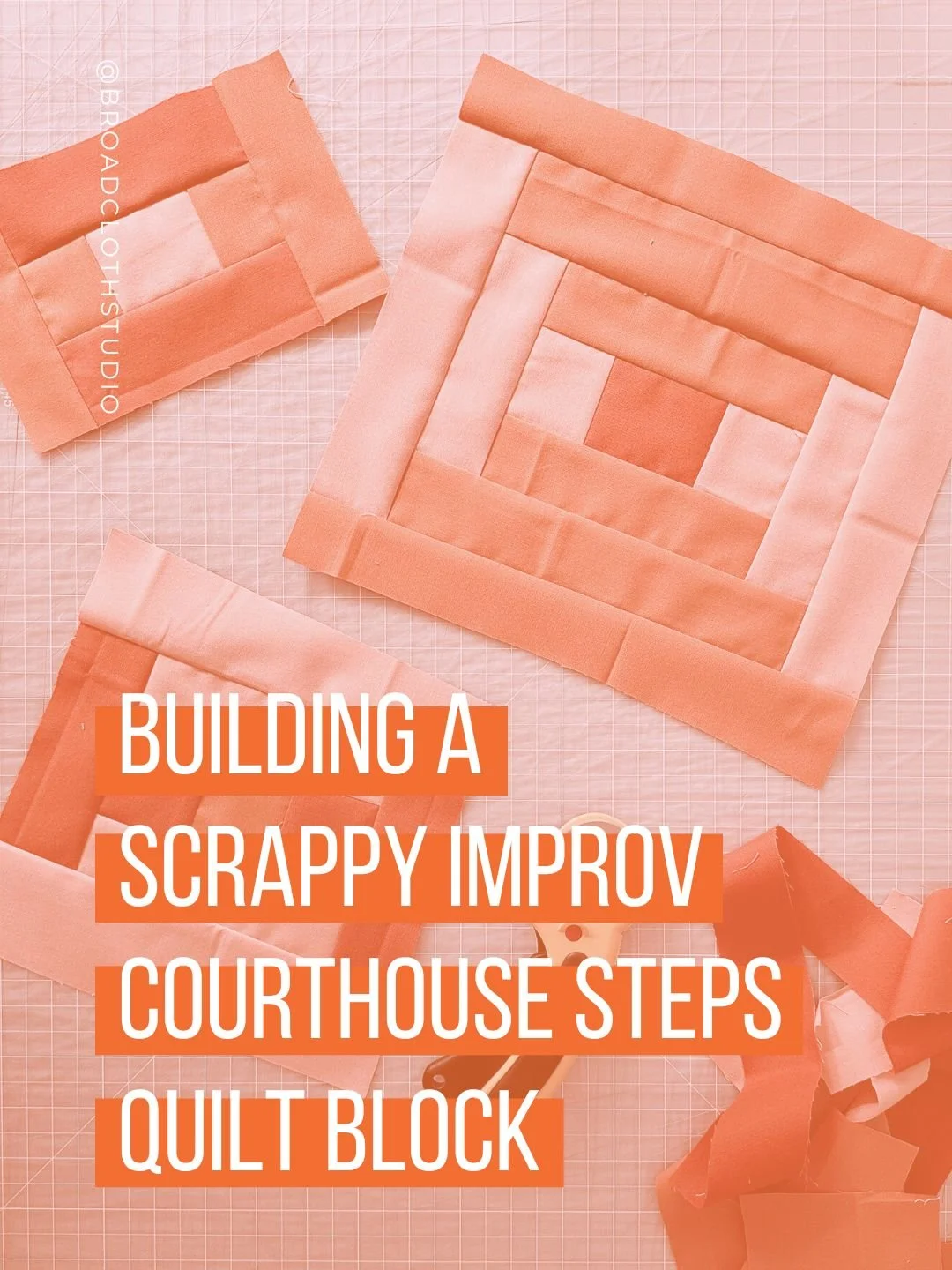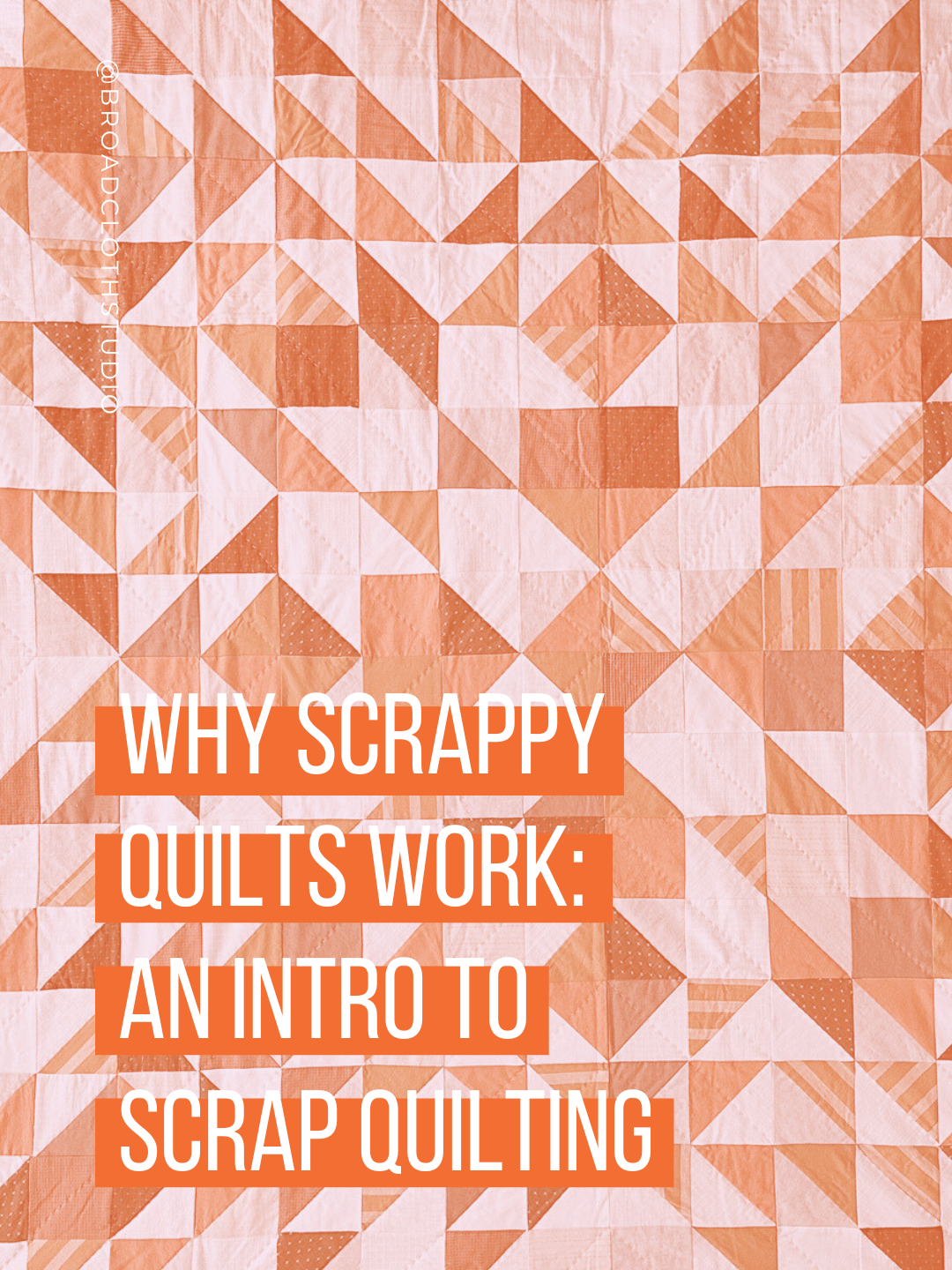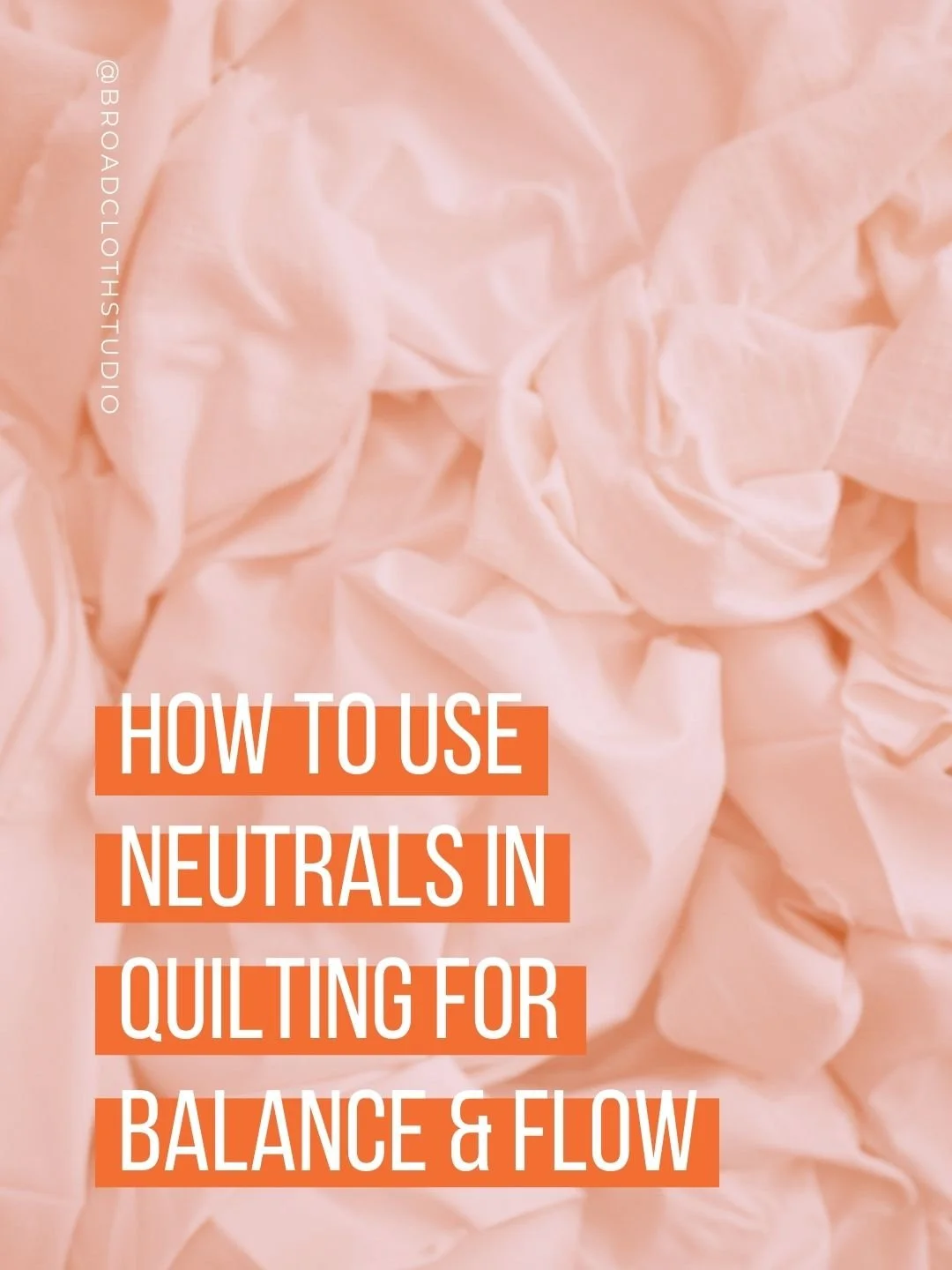Keep It Simple: Start Improv Quilting with Just One Shape
One shape. Nine variations. Each a quiet reminder of how much possibility lives inside a simple form.
When you think of improv quilting, what comes to mind?
For a lot of folks, it’s total freedom: no patterns, no rules, just fabric and instinct. And honestly, how beautiful is that?
But if you’re like me, that wide-open blank slate can feel more terrifying than freeing. Sometimes, a little structure is what actually sparks your creativity. Which is beautiful too.
Whether you’re embarking on your first improv quilt or your twentieth, I think one of the most important things is finding a process that works for you.
Just like there’s no one-single perfect patchwork style, there’s no one perfect way to be creative. You have your own voice. Your own energy. Your own rhythm. So set it up for success. Whatever support (or lack of) you need to feel momentum? That’s valid.
For me, the secret sauce is a creative prompt. And my tried-and-true that I come back to time and again, especially when I’m feeling unsure, tired, or in need of a shake-up, is to keep it simple…and keep it a little silly. Something as simple as a reduced color palette. Or just one shape.
Today, we’re going to dive into what can happen when you pick a single shape and challenge yourself to get as weird, wobbly, or wild as you want with it.
Why One Shape Can Go a Long Way
In my blog post a couple weeks ago, I mentioned how limiting myself to just one shape—the quarter circle curve—was what finally unlocked improv quilting for me. The “One-Shape Wonder” idea was one of my five improv quilting prompts for beginners, and today I want to dig deeper into why that kind of constraint can actually be so freeing.
First off, when you start with just one shape, you’re not chasing inspiration from scratch every time. You’ve got a form to return to. When an idea doesn’t pan out, you’re not facing a total blank slate. You’re coming back to a structure. And that makes a big difference.
Because being creative can feel really vulnerable. Even taking small risks, even if you’re the only one who sees them (and let’s be honest, you’re probably your own toughest critic), isn’t always easy. So having a shape as a kind of safety net? That’s powerful. Especially when you’re experimenting, exploring, or just trying to get unstuck.
Then there’s the power of riffing. Or what business-speak might call incremental innovation. You take your base structure and change one thing at a time. And those small shifts—rotating a triangle, stretching a the leg of an L, swapping a color, adding a pop of color for contrast—they add up fast. They bring movement and energy into your quilt without overwhelming you with the pressure of inventing something new at every turn.
Think about jazz music. The song starts with a theme. And then the musicians riff. They play with rhythm, harmony, tone. Maybe they even break a few rules. But that theme is still there underneath it all, keeping things grounded.
That’s what it’s like to build a quilt with creative constraints. The structure isn’t a limit. It’s a launchpad.
The Humble L-Shape: A Case Study
I’ve always loved a scrappy quilt back (stay with me here, it's related!). And while photographing them for a recent sample sale, I realized something: they were all basically giant L-shapes in disguise.
So I decided to explore this shape more intentionally. To limit myself to just the L-shape, a simple right angle construction I clearly keep gravitating toward, to see what might emerge.
In my explorations, I’ve built out mini quilts in fabric, and I’ve sketched and sketched and sketched again. I’m even planning to start making tiny paper collages next, just to keep playing.
It’s not a fancy shape. But it’s incredibly adaptable and full of possibility. It can frame a space, suggest movement, create tension, or settle things down. As I’ve played with variations—chunky vs. skinny, floating vs. anchored—I’ve started to see my own visual language emerge. One that feels cohesive without being repetitive. Structured, but never stiff.
Instead of feeling limited, I’ve felt energized, pushed to try new combinations within the same improv quilt layout. I’ve come to love the rhythm of incremental change, how each tiny variation adds up. And seeing these mini quilts grouped together? That’s where the magic really shows up for me.
This L-shape exploration has been creative gold. By deep-diving into the L-shape, I wasn’t closing myself off to other ideas. I’ve been opening doors I didn’t even know existed, down a path I might’ve overlooked if I hadn’t just picked one simple quilt shape and committed to seeing where it could lead.
One L-shape holding space for another.
Bold contrast makes it easy to spot the L-shape.
Giant stripes build the inner L-shape foundation.
Multiple L-shapes built from simple scraps.
The Recipe for My Secret Sauce: 5 Steps
Does a single shape deep dive like fun? If so, here is my go-to design prompt to get started (and if you have my book, Quilting Adventures, it’ll sound familiar!). It’s an approach to designing I first learned in school, and the method I return to whenever I want to explore a new idea or shake myself out of a creative rut.
Here’s how you can start exploring what shape—or structure—supports and lights up your creativity. This works whether you’re stuck, starting fresh, or just need a gentle push back into play.
1. Choose a shape.
Keep it simple. Stripes, checkerboards, and L-shapes are all great starting points. These shapes are familiar enough to be approachable, but flexible enough to surprise you.
2. Don’t start with fabric.
Fabric can feel precious. It’s not cheap, and it can introduce pressure before you even begin. But paper and markers? Cardstock and a glue stick? Total freedom. Use scraps you have around the house. Recycle junk mail. Lower the stakes by starting with materials that feel low-stakes.
3. Choose five verbs.
These are your transformation “levers” that you’ll apply to your shape. Think of action words like: rotate, stretch, shrink, mirror, repeat, flip, shift, overlap, offset. Grab a thesaurus. Google “transformative verbs.” Choose five that feel playful or expansive to you. You’ll use these to remix your shape and spark new ideas.
4. Grab a timer.
Don’t leave this open-ended. Set a time limit. Fifteen or thirty minutes is a great place to start. A timer helps short-circuit the part of your brain that starts asking, “What if this goes wrong?” and gets you moving.
5. And…draw!
Sketch quickly. Don’t overthink it. Take your shape and apply your verbs. Combine them. Layer them. Start over. If you feel stuck, go back to your base shape and try a different word. Use chunky markers so you’re not tempted to be precious or fussy. Once the timer buzzes, step away. Don’t start looking at what you made immediately. Take a break. And when you come back to it, approach it with curiosity, not judgement.
Remember: It’s Not About Perfect
A humble shape, a quiet experiment. Sometimes that’s all it takes to get the ideas flowing.
If you want to bring more clarity, momentum, and joy into your improv quilting practice, try the exercise above.
This isn’t about making perfect designs. It’s about generating creative quilting ideas and laying the groundwork for something unexpected to emerge.
Maybe something will come from it that you want to turn into a quilt. Maybe you’ll come up with another totally different idea. Maybe you’ll just have fun. Whatever it is, your creative muscle has had a nice little workout and is stronger than it was yesterday.
You don’t need a big plan. You just need a shape, a prompt, and a willingness to explore.
Want a Little More Structure?
And if you’d like a little more support along the way—something with prompts, layout ideas, and step-by-step guidance to help you take your ideas and turn them into quilts—I’ve created exactly that in my L-Shape Studies Playbook.
It includes printable templates, construction planning tools, guidance on scaling designs from sketch to quilt, and video walkthroughs to help you build with confidence. Whether you’re brand new to improv quilting or just looking for your next creative spark, this playbook gives you a clear path forward without the overwhelm.
A simple shape. A clear path. And a process you’ll want to return to again and again.
View the full details here.

















